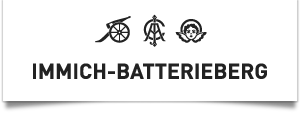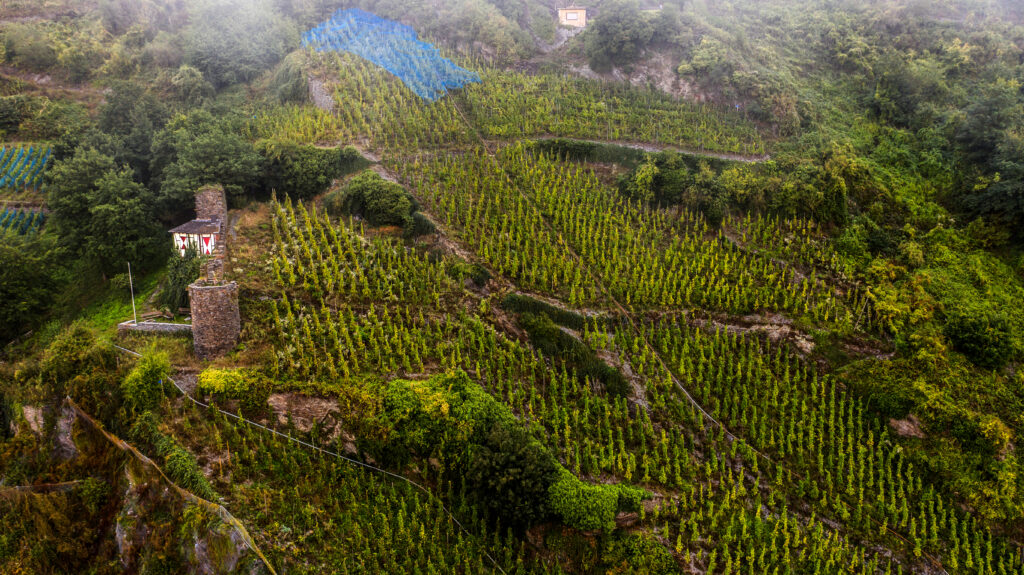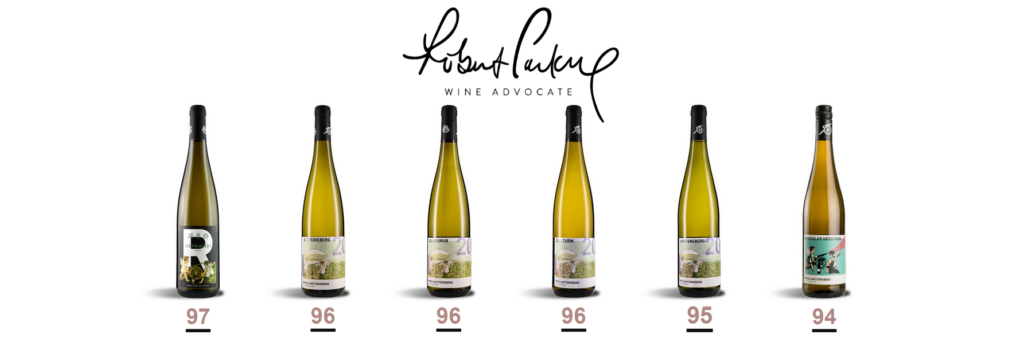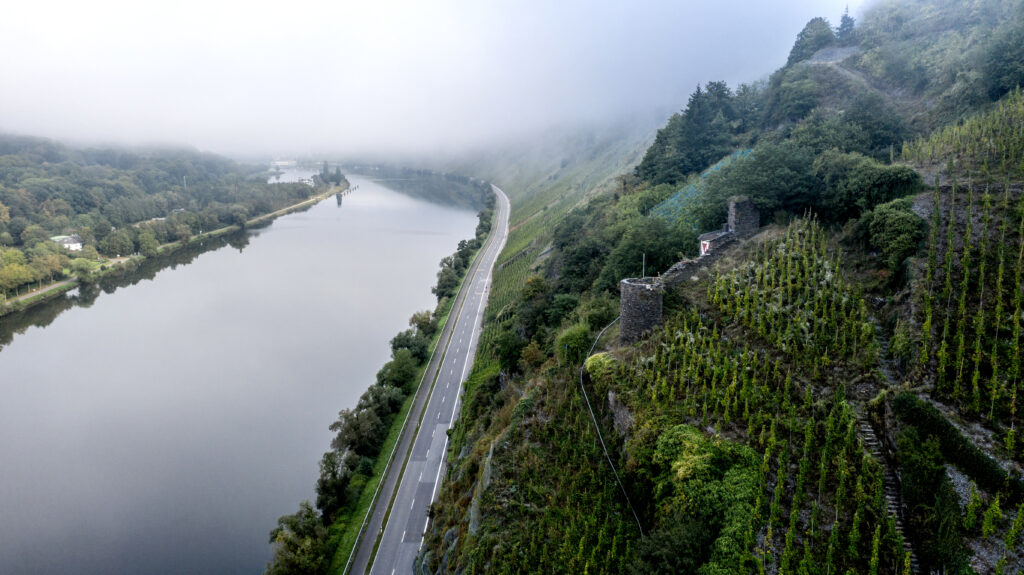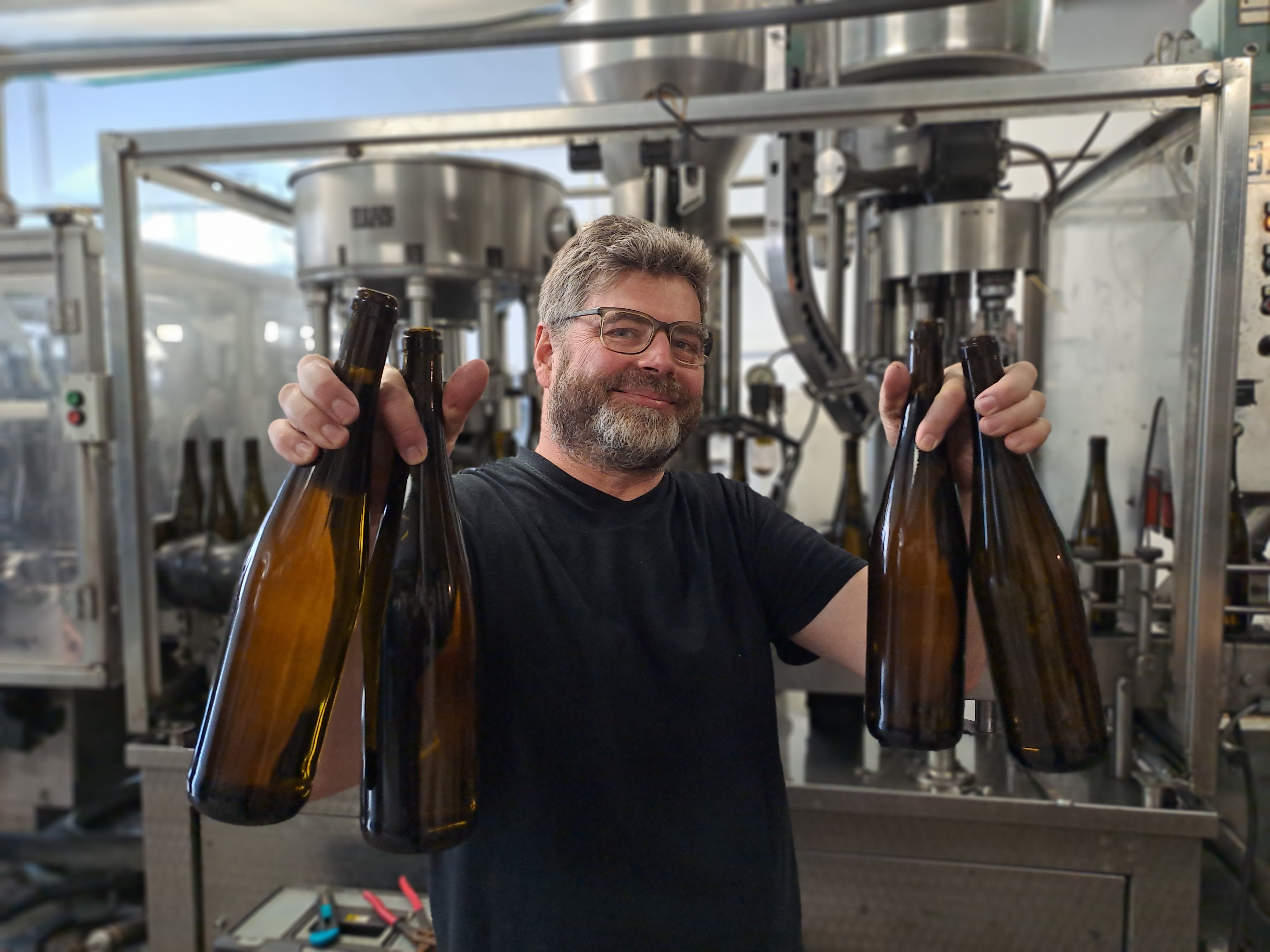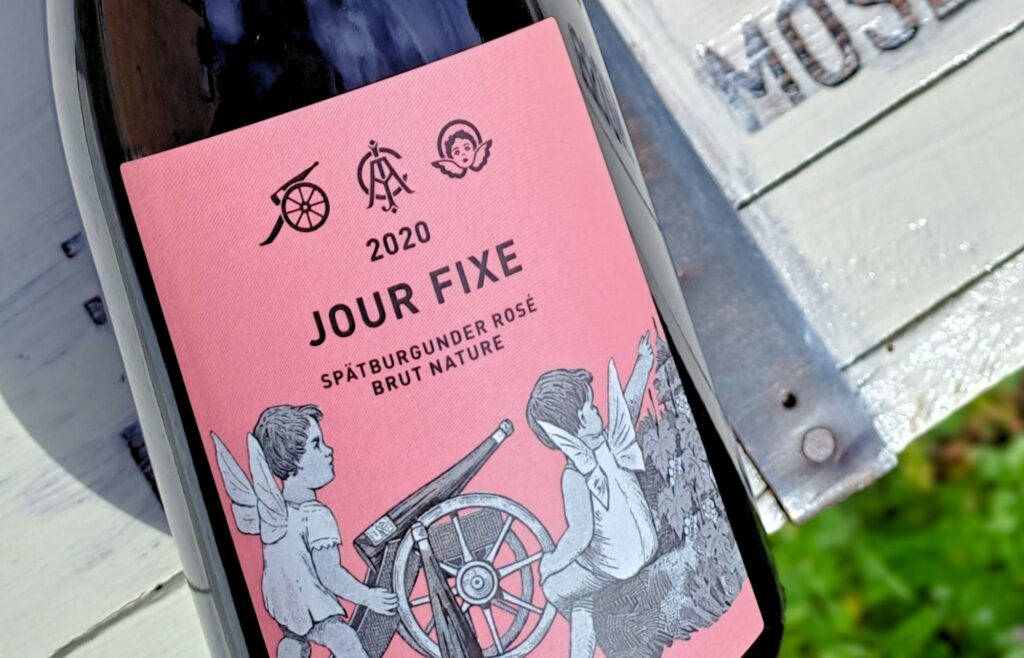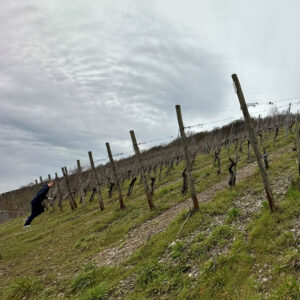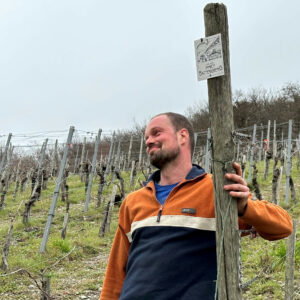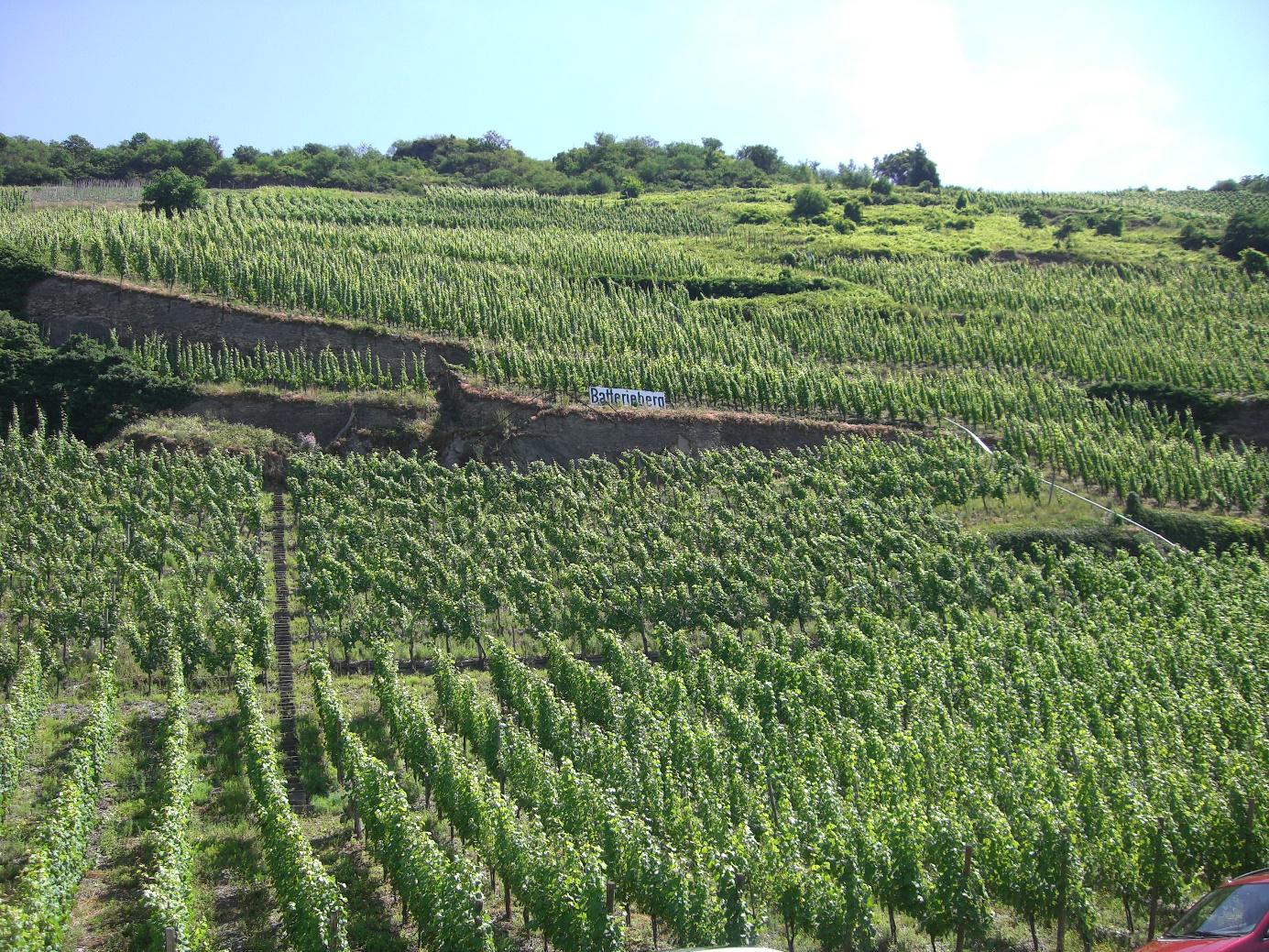2023 ZEPPWINGERT RESERVE Riesling | 97 points
From 100+-year-old vines, the 2023 Zeppwingert Reserve is deep, pure and slightly toasty on the nose that is reminiscent of stewed apricots. Crystalline and saline on the palate, this is a rich and powerful yet vivacious Riesling with a promising finish.
2023 BATTERIEBERG Riesling | 96 points
From 80+-year-old Riesling vines on gray slate and quartzite soils that yielded only 20 hectoliters per hectare, the 2023 Batterieberg is pure, refined and saline on the stony nose. On the palate, this is a very rich and generous yet very elegant, saline, crystalline, precise and persistent Riesling that is not fully dry but enormously long in terms of structure.
2023 ZOLLTURM Riesling | 96 points
From 80+-year-old vines on gray slate and quartzite soils, the 2023 Zollturm is deep, intense and rich as well as enormously mineral and flinty on the saline nose. Full-bodied, intense and enormously mineral on the palate, this is an elegant, refined and saline but tight, intense and very complex, finely tannic and grippy Riesling with a long and promising, complex, crystalline and saline finish. There seems to be a bit more younger oak here than in the Ellergrub.
2023 ELLERGRUB Riesling | 96 points
From 80+-year-old vines on blue slate, the 2023 Ellergrub is very clear, deep and fresh on the utterly mineral and flinty nose that is saline, pure and stony and concentrated in its fleshy fruit. Round, rich and elegant on the palate, this is a remarkably pure, refined, savory and stimulating saline Ellergrub with fine tannins on the long and intense, stimulating and mouth-tickling finish. This impressive Riesling has never been better.
2023 STEFFENSBERG Riesling | 95 points
From red slate soils and exclusively ungrafted massal selections, the 2023 Steffensberg Riesling is deep, pure, intense and refined on the nose that is fascinating in its purity and aromatic intensity that intermingles with saline notes of slate shards and herbal nuances. Lush and elegant on the palate, this is an intense yet refined, mouth-filling and textural, enormously savory and sustainable Riesling with spectacular length.
2023 BRIEDELER HERZCHEN Riesling | 94 points
The 2023 Briedeler Herzchen is intense in color and flavors that indicate perfectly ripe and aromatic fruit spiced with flinty and saline notes of gray and red slate. Intense and complex on the palate, this is an elegant, refined and stimulating saline Riesling with an excellent and irresistible savory finish. This is possibly the finest Herzchen Gernot Kollmann has produced so far.
2023 ESCHEBURG Riesling | 93 points
The 2023 Escheburg is from 60-year-old Riesling vines, mainly from the Ellergrub (50%), that yielded 35 hectoliters per hectare. The wine vinified in smaller oak barrels for 10 months and opens with a reductive and stony bouquet of ripe and open fruit aromas with flinty nuances. Round and juicy on the palate, this is a dense and complex, saline and savory, super salivating and energetic Escheburg with tension, precision and character.
2023 DETONATION Riesling | 92 points
From top, super stony, organically farmed vineyards in the Enkirch, Briedel and Sennheim and bottled in early October 2024, the 2023 Detonation Riesling is pure and complex on the saline and stony nose that indicates a still young and age-worthy dry Riesling. Shallow yet savory and tensioned on the palate, this is an enormously saline and lean dry Riesling with a stimulating and finely structured, salivating finish. This is a character of purity and finesse.
2023 CAI Riesling | 91 points
The golden-yellow colored 2023 CAI Riesling Trocken is quite deep and substantial on the nose that indicates perfectly ripe, intense and elegant fruit with flinty and herbal slate notes. Nervy, vital and remarkably elegant on the palate, this is a dense, intense and juicy as well as savory dry Riesling with enough substance and concentration to balance the 1.8 grams per liter of residual sugar perfectly well. This is an impressive estate wine.
2023 ROB Pinot Noir Rosé | 89 points
The unfiltered, salmon-colored 2023 ROB Spätburgunder Rosé Trocken combines a ripe and delicate red fruit aroma with flinty/spicy slate nuances on the clear and precise but soulful nose. Medium-bodied and fresh yet remarkably complex and textured with ripe fruit, this is an elegant and harmonious yet tensioned, vinous and sustainable rosé that comes from younger vines on the Pünderich side of the Briedeler Herzchen vineyard. Here, they are rooted in red to gray slate. The grapes were fermented with natural yeasts in stainless steel tanks, and the wine remained on the full lees until bottling in July 2024, with a moderate addition of sulfur.
2023 ELBLING | 88 points
From a 50-year-old limestone vineyard in Nittel, Upper Mosel, that has been farmed organically for 20 years by Karl Sonntag who is still cultivating this cru from the Nitteler Leiterchen, the unfined, unfiltered and unsulfured 2023 Elbling unfiltriert opens with a pure, intense and somewhat untamed nose of ripe and golden berries with crushed calcareous notes. Creamy and elegant on the palate, this is a light, pure and linear yet textural and lemon-fresh finishing Elbling that fermented in stainless steel and was kept on the full lees until the bottling at the end of July 2024. Imagine a sparkling wine without bubbles but with a lees-y texture and stimulating freshness. The vineyard yielded 60 hectoliters per hectare, which is quite low for Elbling. This is a refreshing light wine that goes very well with blue mussels.
2022 MONTENEUBEL Pinot Noir | 92 points
Kollmann’s red wine is only produced in top vintages. His beautifully aromatic and fragrant Enkircher 2022 Monteneubel Spätburgunder comes from red slate soils and opens with perfectly ripe and intense dark fruit aromas intertwined with floral and also flinty slate notes. This medium-bodied and harmonious wine is silky, lush and generous on the palate yet always clear, fresh and refined thanks to fine tannins and delicate crystalline and saline acidity. The finish is tart and cleansing and adds cherry flavors. This is a highly stimulating Mosel Pinot Noir for many occasions.
The vines on the Enkircher Monteneubel, which runs parallel to the Steffensberg, are 30 years old and of unknown genetics. “It won’t be a Mariafelder, because the grapes are too small and compact-berried for that,” says Kollmann, who doesn’t know anything about the rootstocks either. The wine is fermented with 100% whole clusters in 550-liter vats and macerated with the feet, while carbonic maceration takes place in the areas below. The wine is then fermented with the press wine in used barriques and remains there for almost two years until bottling.

